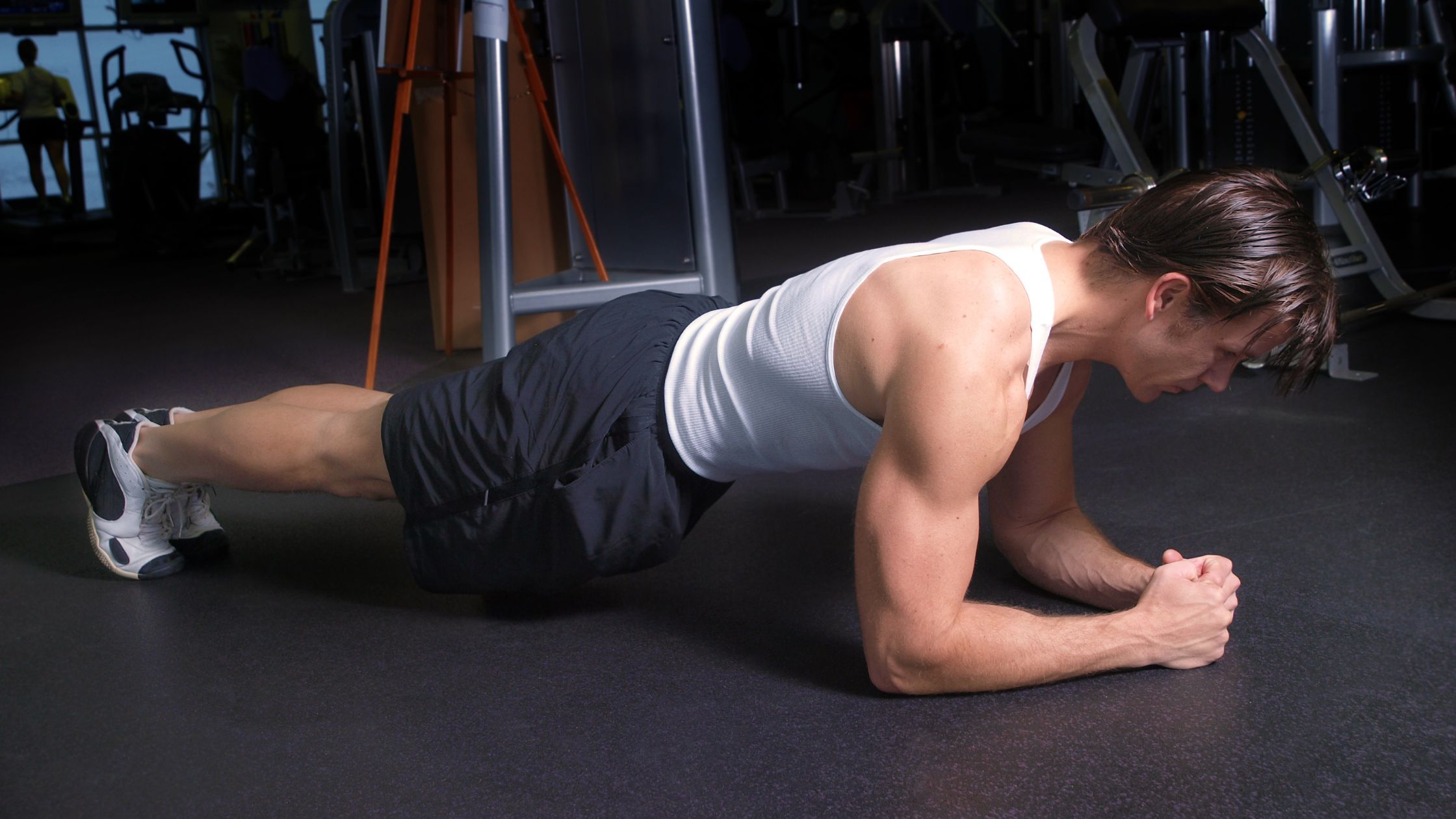In my other articles about EDS and POTS, I’ve discussed how maintaining tension on muscles through slow and controlled strength training carries unique benefits and avoids many of the dangers of exercise. The many clients with POTS at our strength training studio in Chesapeake, VA benefit from this approach to improve their symptoms. But in this article, I want to talk about a subset of continuous tension strength training that can be safely applied at home and with minimal equipment: isometrics. Isometric exercise is as an ideal for those with POTS to increase activity and muscle stimulus, while avoiding overuse injuries and chronical fatigue.
Don’t have POTS? Read this anyway!
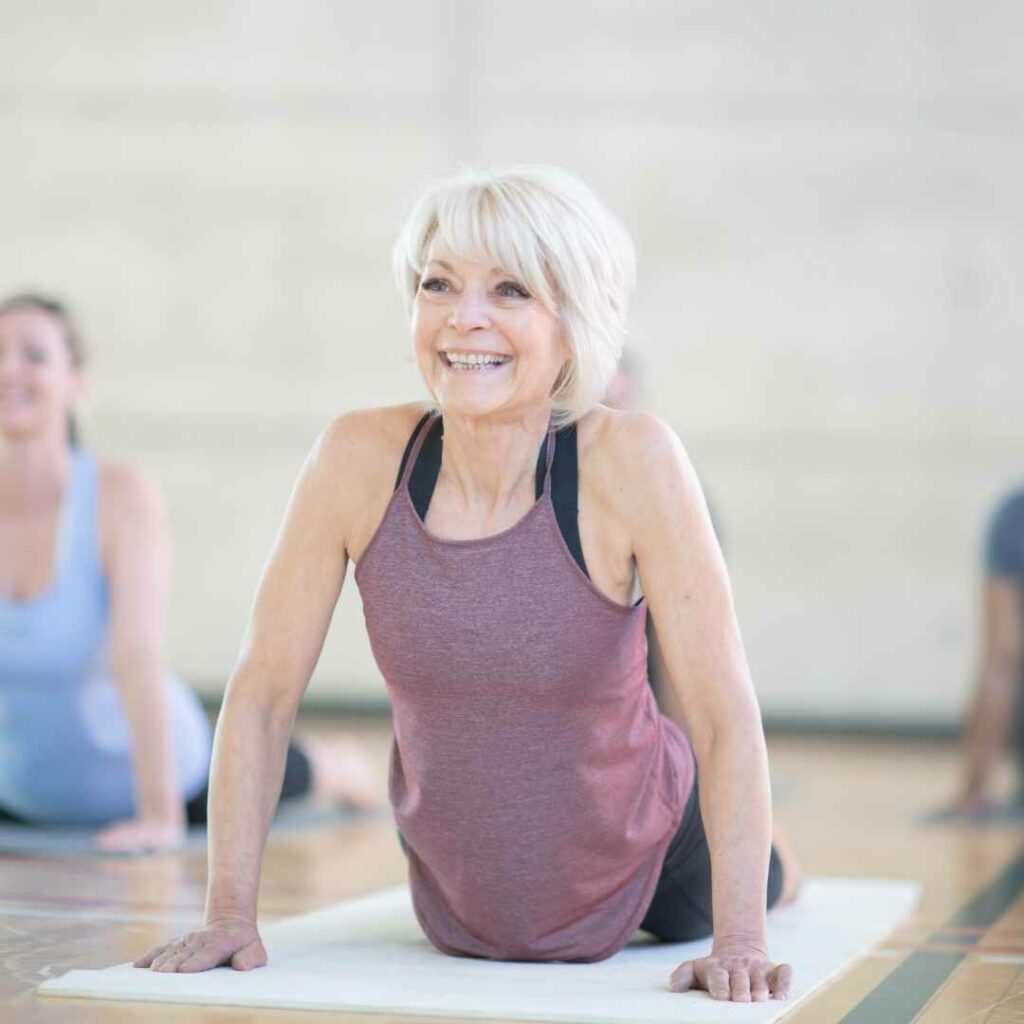
Even if you don’t have POTS, this article is for you. A person with POTS must be extremely cautious about overdoing it, as they are at risk of suffering exhaustion from too much activity. But guess what, if you are already exercising effectively with strength training once or twice per week, you also need to be cautious about overtraining! Once you have done productive strength training, extra exercise needs to be approached with caution, and isometrics are an ideal way to do this.
This article will delve into some of the unique benefits of isometric exercise – namely, their ability to deeply stimulate a muscle without causing significant muscle damage or systemic fatigue. Whether you are trying to learn about isometric exercise for POTS, or simply want to learn how to incorporate additional exercise while traveling or in between supervised workouts, I promise this article will help set you on the right track.
Why should we consider adding more exercise like isometrics?
At StrengthSpace in Chesapeake, we deliver bespoke, full-body strength training routines involving mostly dynamic (moving) exercises. Our clients typically train only once or twice a week, depending on the level of effort they can tolerate. And when the intensity is dialed in correctly, the evidence is clear that very abbreviated training routines of just 1 to 2 sessions per week can be more than adequate for building and maintaining a healthy level of muscle mass and strength.

And because the routines are so brief, clients often wonder if they should be doing something more outside their supervised workouts. My first answer to this question is always: “Find activities that are fun for you!” If you miss playing tennis, or you enjoy hiking or gardening, then you already have the answer of what else you should be doing. The benefits of increasing our activity levels by even small amounts are significant, and well established.
Sometimes, however, these activities aren’t possible. Perhaps your work schedule makes it impractical to set aside an extra hour for a hike or trip to the tennis courts. Maybe you are traveling for work, or are busy with a project that takes all your time. Or, it could simply be that you have a health condition like POTS, and the symptoms you experience with upright activities like hiking make it hard to get enough healthy activity throughout the week.
In these situations, isometrics are a simple, time-efficient, and joint-friendly way to fatigue and stimulate your muscles without leaving you exhausted or overworked. I’ll explain why those claims are true, but first, let’s define isometric exercise.
What are isometrics?
Isometrics involve applying tension to a muscle without any movement, and holding that tension until the muscle fatigues. Planks, wall-sits, and static holds are all examples of isometric (or motionless) strength training. Unlike a conventionally performed exercise, there is no lifting or lowering of the weight, and the muscle doesn’t shorten or lengthen under tension. You simply hold the weight (or yourself) motionless, or sustain a muscle effort against some immovable object.
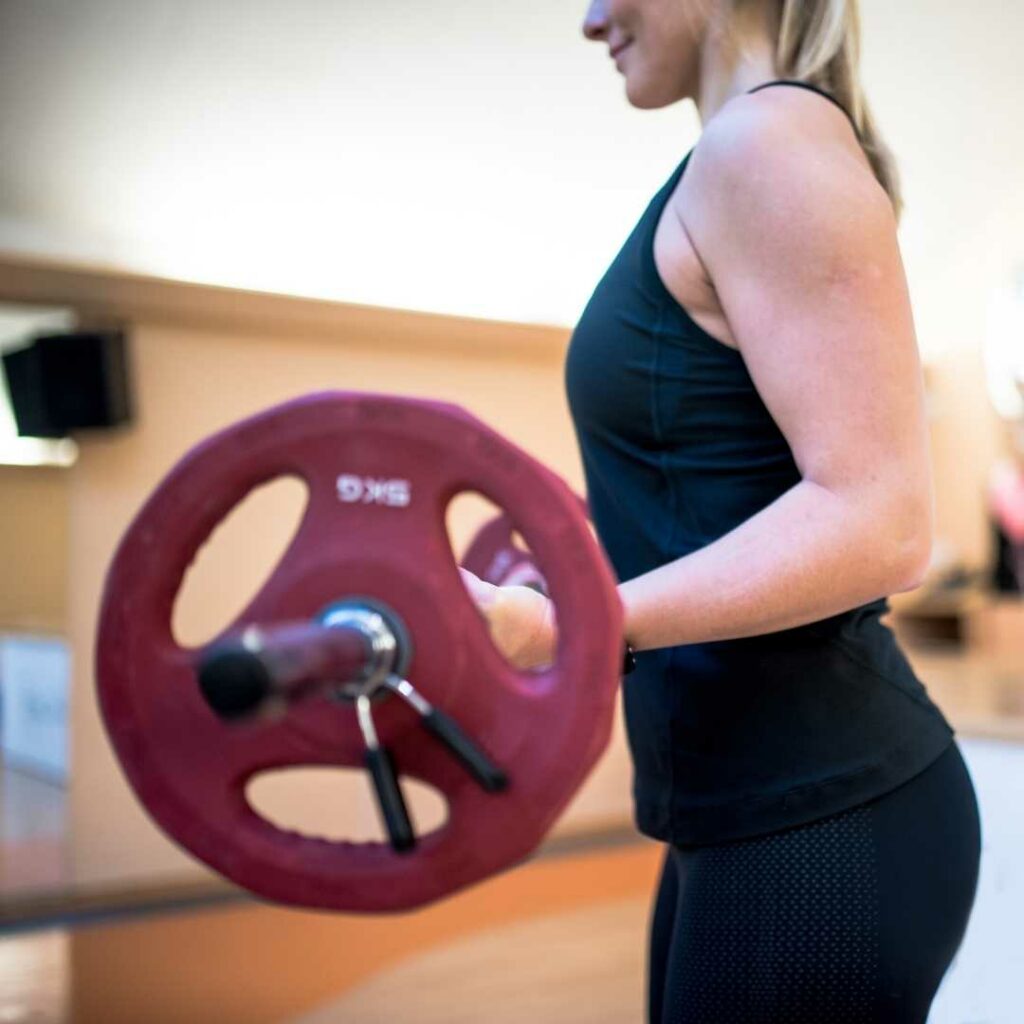
Isometric exercises can be broken down into two categories: yielding isometrics, and overcoming isometrics.
Yielding isometrics are where a load is placed on the muscle, and you work to resist that load as long as possible, until your muscles give out.
It doesn’t matter whether you are using a callisthenic movement, like a plank or wall-sit, or a dumbbell or resistance band. What matters is that you are trying not to yield against some external force, such as gravity trying to push the dumbbells back to earth, or the resistance band trying to pull your knees together in a clamshell.
Overcoming isometrics don’t involve any weight or external force. Instead, you push or pull against an immovable object. These are a bit trickier to do correctly and safely, but I want to make sure the distinction is clear. Trying to pull against a chain or webbing strap which can’t stretch, or trying to raise your arms out to your sides against a door frame, are both examples of overcoming isometrics. In both cases, you are generating the resistance by trying to overcome a fixed resistance.
Yielding isometrics are a bit easier to use to track progress. If you hold the ten pound dumbbells for an extra 20 seconds this week, or last 10 seconds longer in your wall-sit, it is clear that you have made progress. Overcoming isometrics make this more difficult. You may “last” ten seconds longer this week, but it’s possible you weren’t actually pulling or pushing as hard, and thus you might not have actually made progress. For this reason, most of us will have an easier time using yielding isometrics, and I’ll focus on examples of these through the rest of the article.
Why is isometric exercise ideal for those with POTS?
There are 3 big factors that make isometric exercise uniquely beneficial for individuals with POTS, and for anyone who is trying to increase their strength training without harming their recovery.
- Isometrics don’t involve a shortening contraction.
- Shortening a muscle in conventional exercise is deeply energetically expensive.
- Because isometrics don’t shorten the muscle, they won’t leave you feeling as tired later.
- Isometrics also don’t have the lengthening action.
- Lengthening a muscle under tension produces muscle damage in conventional lifting.
- This damage can be beneficial, but too much leads to excess soreness
- Without this damage, you are unlikely to “overdo” isometric exercises
- Isometrics produce fatigue quickly due to continuous tension.
- Without motion, there is reduced blood flow to the muscle.
- This means the muscle achieves thorough recruitment and fatigue quickly.
- As a result, less weight and fewer reps are used, reducing wear and tear.
These three factors mean isometrics are good at recruiting and fatiguing a muscle quickly, but at the same time cause less fatigue and recovery debt later. They can be done regularly without as much concern for overtraining, and won’t leave you chronically exhausted.
How can I use isometric exercise for POTS on my own?
The best exercise program is the one you will actually do. In order to make your routine feel accessible, we’ll need to limit ourselves to what we actually have available.
Literally any exercise can be turned into an isometric exercise by simply holding motionless. But to make the exercise effective, we have to keep a few big ideas in mind:
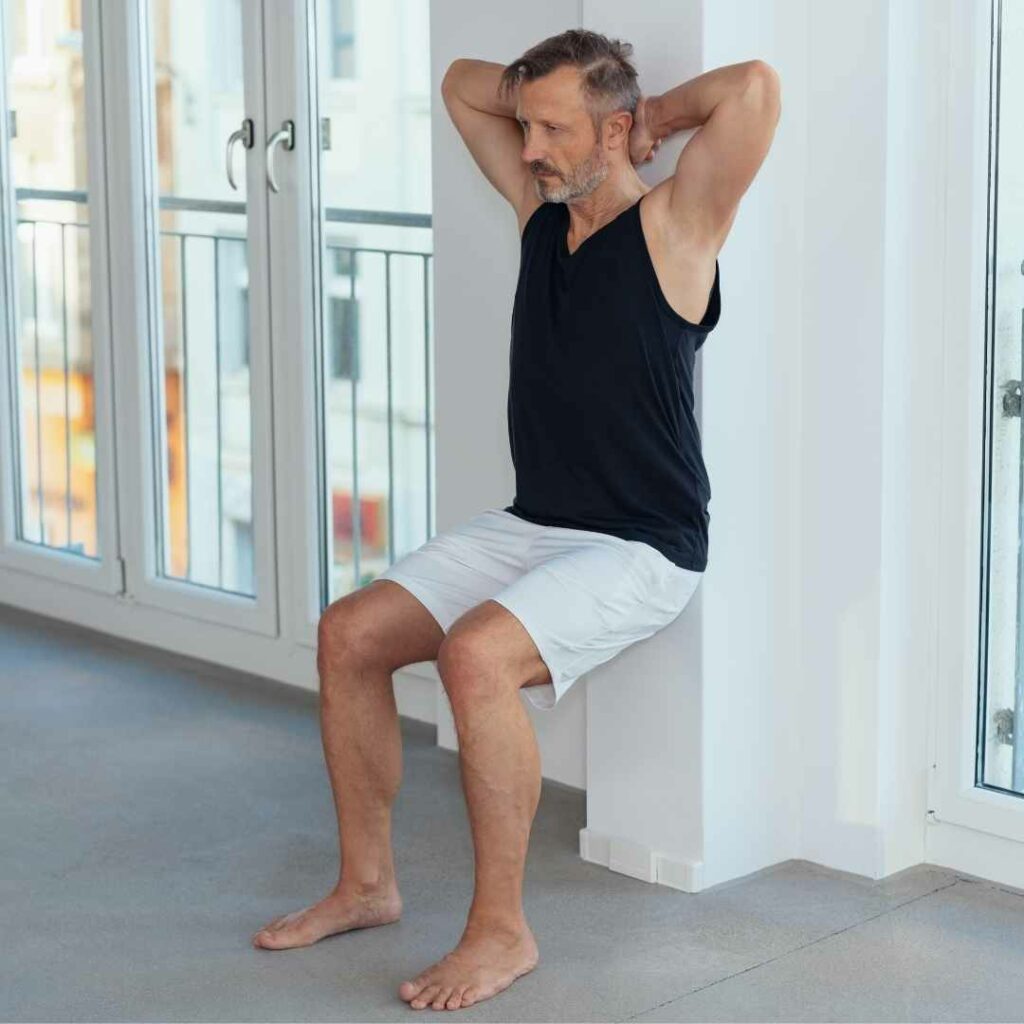
Rule 1: Choose comfortable exercises.
Try to pick a joint position and difficulty level that minimizes or eliminates pain if you can. Sometimes, some mild joint discomfort is unavoidable, as might be the case if you are managing some inflammation in your knee. In that case, an exercise like a wall-sit can be a good option even if it is uncomfortable. But pain should not worsen during the exercise, and your pain shouldn’t be worse the next day. If it is, the exercise you are using likely isn’t the best fit.
Rule 2: Don’t quit.
Your muscles will scream in protest, and your body may shake a bit. You may feel your heart rate rise, and even feel winded. Congratulations! These are all signs that you are doing a good job of fatiguing your muscles. Your body won’t produce positive changes unless the difficulty level is significant. After all, you wouldn’t expect to build calluses without some friction would you? Do everything you can to push yourself until your muscles truly can’t support the weight any more. And don’t worry – it is very hard to overwork yourself with isometrics for the reasons I mentioned above.
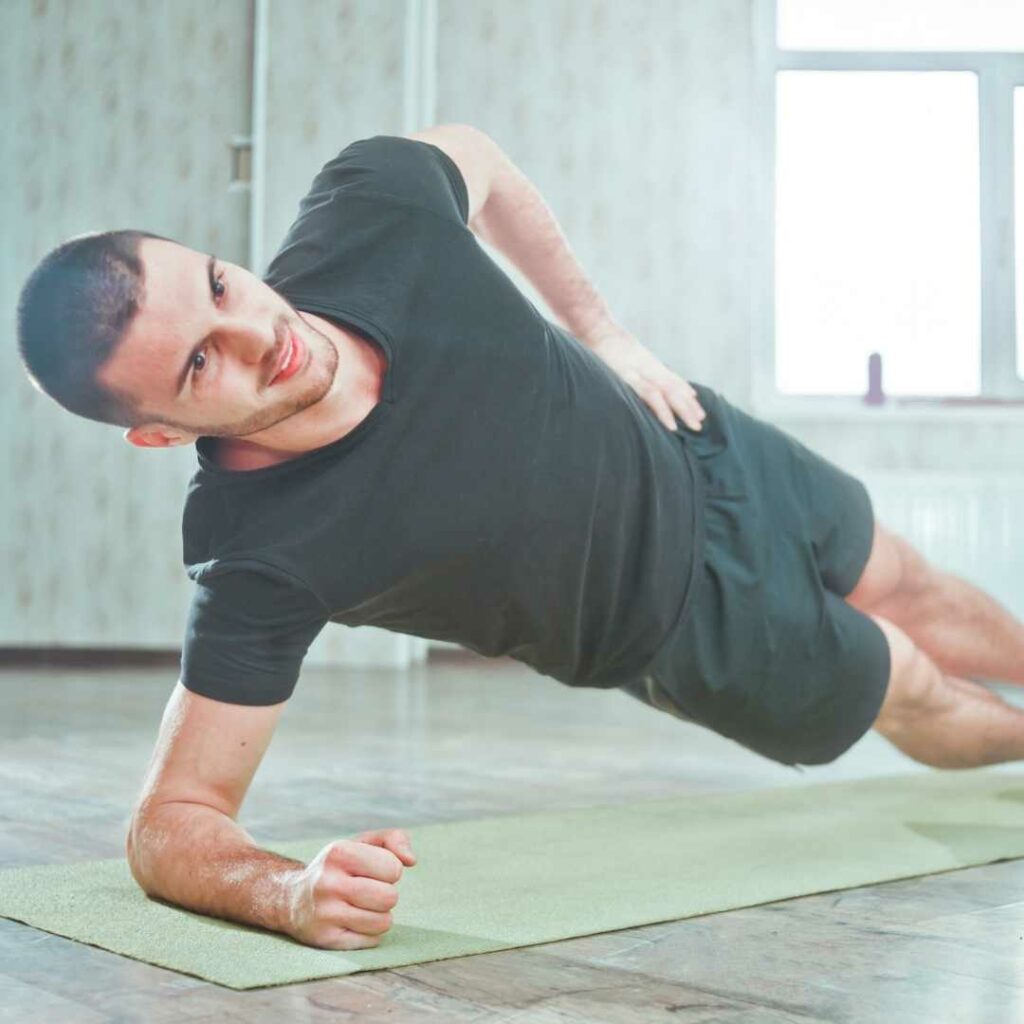
Rule 3: Aim for 2 minutes.
For most people, 2 is the goldilocks zone for duration of an isometric exercise. If you can only last 1 minute with a certain load or variation, see if you can make it slightly easier. Choose a lighter weight, or don’t go quite so deep in your wall sit. Try to build up to 2 minutes before you increase the difficulty. And if you can last well into 2.5 or 3 minute territory, consider making the exercise a little harder next time.
Conclusion
In this article, I set out to explain some unique benefits of isometric exercises. The personal training clients at our studio in Chesapeake, VA know from first hand experience how effective isometrics can be. Whether you have a condition like POTS or Chronic Fatigue Syndrome and need to carefully manage fatigue, or are just looking to fit some extra strength training in without hurting your recovery, isometrics are a great way to meet your goals and improve your health and robustness. Pick movements you can tolerate without worsening your joint pain, don’t quit, and aim for 2 minutes, and you’ll reap the benefits of this time-tested approach to safely getting stronger!

